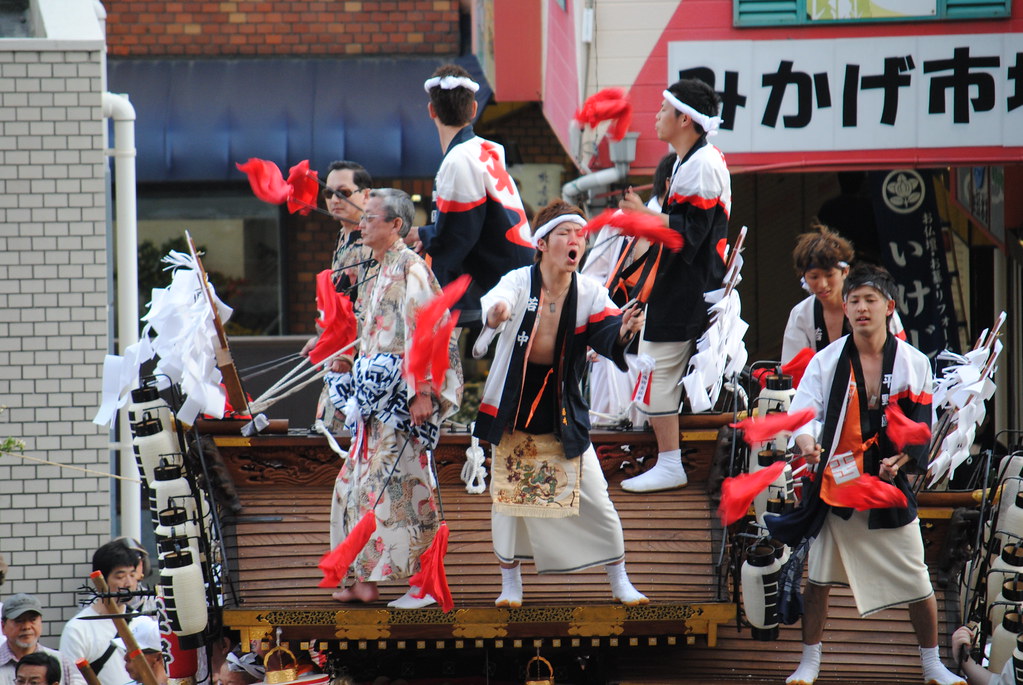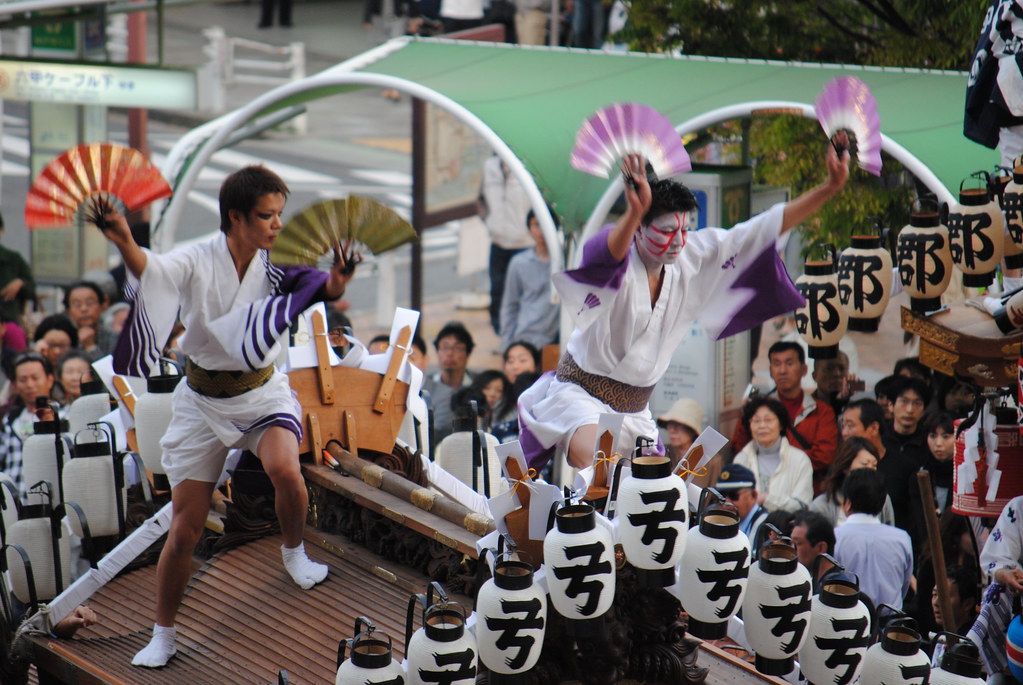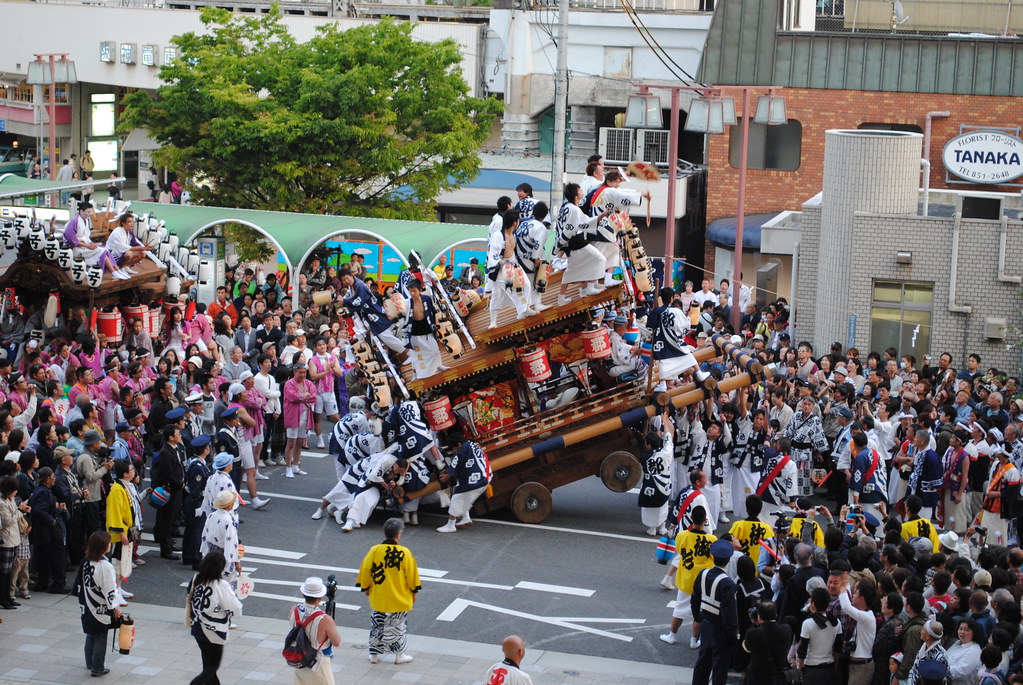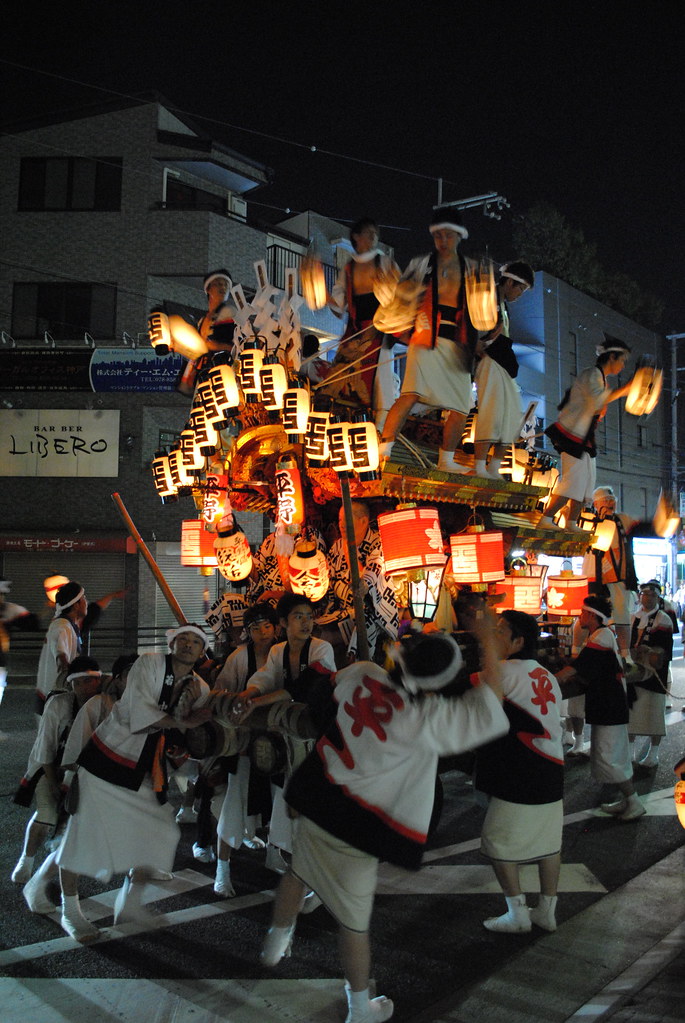While not quite as out of control as the 裸祭り (はだかまつり - Naked Festival), the だんじり祭り is still a bit of a sight to behold. A だんじり is a portable shrine that looks like a room-sized temple on wooden cart wheels. Several of these are filled with gongs, drums and people who aim to make as much noise as possible as they lumber tirelessly through the streets. The best bit? The only way to turn them seems to be to do a wheelie. It's like watching history's first monster truck rally.
The だんじり祭り apparently varies slightly from place to place, but the basic idea is that local groups, shrines or temples own and maintain their own だんじり which is wheeled out for the festival each year. I counted eight in our neighbourhood's version, each one intricately decorated and draped with lanterns. Half of each group stood on top of their roof shouting taunts at the other だんじり, waving fans and streamers and generally looking much less terrified than they should have.
Some even did themselves up in 歌舞伎 (かぶき - Kabuki) makeup, dancing and jeering at the others as they assembled for the festival proper.
Anyone is free to join in, provided they're willing to show up and complete the training. It's mostly men who join in (and usually a lot of them, given how heavy each だんじり is), but one of the teams in particular had a lot of young girls at the helm who didn't seem to have much trouble pulling theirs along.
Of course, there were plenty of people from the other end of the scale, but with some notable exceptions, a lot of the older veterans seemed happier to sit in the relative comfort of their shrine and be wheeled around in style.
Eventually, the last of the だんじり rolled up the street and "parked" in their spot. Given the lack of space, this was easier said than done, but luckily they had practiced their U-turns and parallel parking in advance! I'm not sure which was more amazing - getting the だんじり up on their back wheels, or not falling off the roof in the process!
Once everyone was in place, the parade began. A roar went up, the drums and gongs went ballistic and each shrine lurched forward in turn to show off their power and skill. Wheelstands, huge spins... the intensity of some of the things they could get the だんじり to do was amazing, to say the least. Half the challenge, I think, was getting them to stop!
I figure there must be a rhythm to all this, working together so that everyone knows which way you're going. All the participants shout along with one another in what's called 掛け声 (かけごえ - kakegoe - roughly, "decorative voice") - basically, a battle cry to keep everyone motivated and in time. There are hundreds of different kinds of 掛け声 used in Japan in everything from sports matches to theatre to 祭り (まつり - festivals) - remember the "わっしょい、わっしょい" ("wasshoi, wasshoi") of the 裸祭り? These words don't really have any meaning - they're kind of like "heave ho" or "one, two" in English. In this case, everyone was chanting what sounded like "はおせ、はおせ" (haose, haose). It was obviously working!
Eventually, all the だんじり had taken a turn, exhausting themselves with their performances and constant shouting. I figured they would all pack up and go home, but they turned around and headed out on to the streets, rumbling through the neighbourhood well into the night. By this point it was pitch black so the lanterns had been lit up. The effect was striking.
The sound of the drums and gongs echoed around the neighbourhood long after I had gone to bed and the performance was repeated over several nights. I think it's this tireless dedication that really makes events like the だんじり祭り special. The amount of work that goes into maintaining these old traditions so perfectly is staggering, and that's the difference between a good 祭り and a brilliant one (although the wheelies definitely help too). If you have a chance, make sure you enjoy the fruits of their labour. はおせ、はおせ!









No comments:
Post a Comment
If you have any questions or additions, I would love to hear from you. I may not know the answer, but I'll do my best to find out in any case! You can post anonymously if you like, but abusive/unintelligible/inappropriate comments will not be published.